Strategies for Fair and Profitable Rates
Introduction
Determining the right pricing strategy for freelance projects is a critical aspect of running a successful freelance business. Setting fair and profitable rates not only ensures your financial well-being but also reflects the value you bring to clients. In this blog post, we will explore essential strategies to help you confidently price your freelance projects, strike a balance between competitiveness and profitability, and build long-term client relationships.
- Understand Your Value Proposition: Begin by understanding the unique value you offer to clients. Assess your skills, experience, expertise, and the results you can deliver. Consider how your services can positively impact clients’ businesses or solve their problems. This self-awareness forms the foundation for setting prices that align with the value you provide.
- Conduct Market Research: Research the market rates and industry standards for your specific freelance niche. Understand the pricing range for similar services, taking into account factors such as experience, specialization, and geographic location. This knowledge will help you position your pricing strategy competitively while maintaining profitability.
- Define Your Pricing Structure: Choose a pricing structure that suits your freelance business model. Options include hourly rates, project-based pricing, retainer fees, or value-based pricing. Each structure has its advantages, so select the one that aligns with your expertise, client preferences, and the nature of the project.
- Factor in Time, Effort, and Expenses: Accurately estimate the time and effort required to complete a project, considering both the direct work hours and any additional research, revisions, or client communication. Additionally, include any business expenses like software subscriptions, equipment, and overhead costs. A thorough understanding of these factors ensures your rates cover both your time and expenses.
- Consider Client Budget and Project Scope: While aiming for fair rates, also consider the client’s budget and the project’s scope. Tailor your pricing to match the value you can provide within their budget constraints. Be transparent about what is included in your pricing and any potential additional costs for extra services or scope changes.
- Offer Different Packages or Tiered Pricing: To cater to a wider range of clients, consider offering different pricing packages or tiered pricing options. This allows clients to choose a package that aligns with their needs and budget. Offer clear differentiators for each tier to justify the price variances and provide added value for higher-priced packages.
- Communicate Your Pricing with Confidence: When discussing pricing with clients, approach the conversation with confidence and professionalism. Clearly articulate the value they will receive, the benefits of working with you, and the positive impact your services can have on their business. Discuss pricing as part of a broader conversation about their goals and how you can help achieve them.
- Regularly Evaluate and Adjust Your Rates: Pricing is not set in stone. Regularly evaluate and reassess your rates as you gain experience, expertise, and market demand. Consider adjusting your rates to reflect changes in the industry, your skill level, or evolving client needs. Continuously refining your pricing strategy helps ensure you remain competitive and profitable in the long run.
Conclusion
Pricing freelance projects is both an art and a science. By understanding your value, conducting market research, considering project specifics, and communicating confidently, you can establish fair and profitable rates. Remember, pricing is not one-size-fits-all, and it’s important to regularly evaluate and adjust your rates as your freelance career evolves. With a well-informed pricing strategy, you can strike a balance between profitability and client satisfaction, ensuring a successful and sustainable freelance business.


